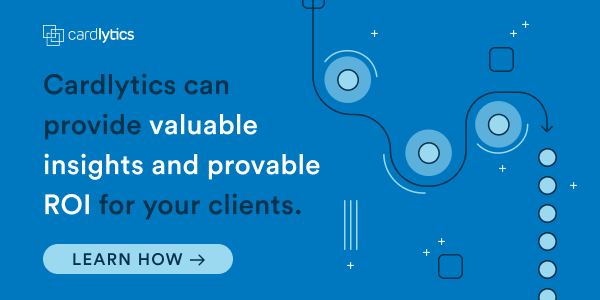By Evelyne Forester, SVP Emerging Revenue, Cardlytics
This year is forecasted to see healthy growth in ad spend thanks to the continued surge in digital advertising. Case in point: eMarketer projects that $239.89 billion will be spent on digital advertising in 2022, a 13.6% increase from 2021. Some of the largest ad-holding groups recently posted strong Q4 and overall 2021 earnings fueled by growth in digital ad spend.
However, agencies are still facing challenges – some old, some new – when defining themselves in relation to their clients. Uncertainty abounds in the marketing world: An increased need for measurable business outcomes is coupled with decreased identifiers and heightened concern around consumer privacy and brand-safe content. Plus, they’re now competing with consultancies like Deloitte and Accenture, as well as clients taking their media buying in-house.
Now more than ever, it’s critical for agencies to position themselves as strategic partners to their clients – as a resource to help clients sort through that pressure and uncertainty to make informed marketing and advertising investments that enable scalable growth.
Let’s review two big points of uncertainty and how you can help steer your clients toward measurable, future-proof outcomes.
How do I effectively build customer relationships in a privacy-first, cookieless future?
New data privacy laws and the sunsetting of third-party cookies have left current targeting strategies hanging in the balance. Your clients need to focus on increasing the first-party data in their current tech stack for the purposes of audience targeting, measurement and insights. In fact, 86% of marketing decision makers say they rely on third-party cookies to some extent. Targeting users at identity-level parameters is crucial to ad success.
Not only do agencies need to help gather and orchestrate this data; they also need to help clients effectively monetize it. That means connecting with platforms and publishers that can activate on relevant audiences and measure the business outcomes they are driving. Once agencies find these partners, the next step is to ensure those valuable users are being reached and messaged to in a brand-safe, contextually relevant environment.
How can agencies support predictable sales in an uncertain environment?
You can’t control the market environment, but you can overcome consumer bias and shift consumer behavior through thoughtful, results-driven performance marketing strategies. For example, providing an incentive like a cash-back offer is backed by behavioral science and recommended by McKinsey’s Behavioral Insight Lab as part of its CHOICES framework (Context, Habit, Other People, Incentives, Congruence, Emotions and Salience).
Why? Because customers value the immediate gratification they provide, and advertisers value the framework and measurability of performance marketing investment. As Tinuiti CEO Zach Morrison says, “[A]ll marketing is going digital; all digital is measurable; therefore, all marketing will become performance.”
Building performance marketing plans around customer incentives can drive outcomes beyond the initial conversion. Issuing rewards that customers really want improves their experience and ultimately drives loyalty. That’s brand equity in your pocket, and when you can bring customers into a formal loyalty program, your customers will voluntarily offer first-party data, and you’ll gain provable results to present to your client.
Developing your strategic client support muscle
Today’s marketers need to balance data privacy, deterministic targeting and brand safety with optimal business outcomes. While you may be clear on the key challenges you want to solve or the opportunity you want to go after, you may need to spell it out for your client in a more formal business case – especially if you’re looking for an increased investment. Be sure that your 2022 strategy solves for client concerns and delivers impressive results by sourcing partners that can help monetize first-party data and invest in performance-driven results.















